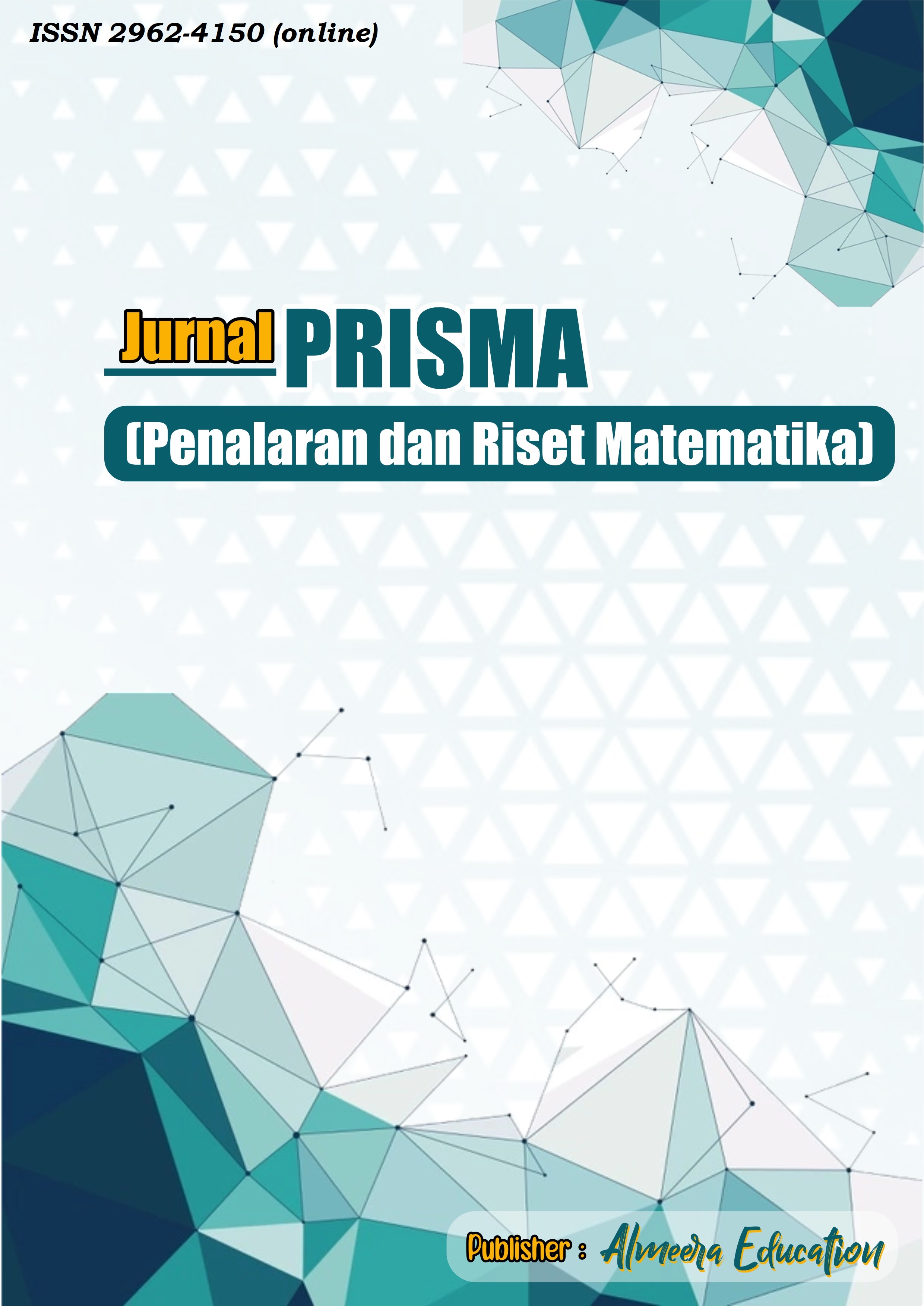PENGARUH PENDEKATAN PEMBELAJARAN ELPSA TERHADAP KEMAMPUAN MATEMATIS SISWA
DOI:
https://doi.org/10.62388/prisma.v3i2.530Keywords:
Learning, ELPSA, Mathematics,, StudentsAbstract
ELPSA (Experiences, Language, Pictures, Symbols, and Application) learning approach is a method designed to improve students' mathematical understanding through direct experience, language use, visual representation, symbolization, and application in real life. This study aims to analyze the effect of ELPSA approach on the mathematical ability of grade XI students of SMK Permata Ilmu. The method used in this research is pretest-posttest design with a population of all students in grade XI of SMK Permata Ilmu and a sample of 32 students. Data were collected through mathematical ability tests before and after the application of ELPSA, which were then analyzed descriptively and inferentially using paired t-test. The results showed that there was a significant increase in the average student score from 55.31 (pretest) to 78.94 (posttest). The paired t-test resulted in a t-count value of 12.45, greater than the t-table (2.04) with a p-value (0.000) <0.05, so it can be concluded that ELPSA has a significant effect on improving students' mathematical abilities. These results support the application of ELPSA as an effective alternative learning method in improving students' mathematical concept understanding.
References
Anderson, L. W., & Krathwohl, D. R. (2021). A Taxonomy for Learning, Teaching, and Assessing: A Revision of Bloom’s Taxonomy of Educational Objectives. Longman.
Boaler, J. (2022). Mathematical Mindsets: Unleashing Students' Potential through Creative Math, Inspiring Messages and Innovative Teaching. Jossey-Bass.
Bruner, J. S. (1966). Toward a Theory of Instruction. Harvard University Press.
Duval, R. (2022). “A Cognitive Analysis of Problems of Comprehension in a Learning of Mathematics.” Educational Studies in Mathematics, 61(1), 103-131.
Freudenthal, H. (2021). Revisiting Mathematics Education: China Lectures. Kluwer Academic Publishers.
Habiba Ulfahyana, & Sape, H. (2024). Penggunaan Media dalam Pembelajaran Matematika: Literature Review. Jurnal Penalaran Dan Riset Matematika, 3(1), 39–52. https://doi.org/10.62388/prisma.v3i1.432
Herwandi, & Habiba Ulfahyana. (2023). Analisis Pemahaman Konsep dalam Menyelesaikan Soal Geometri Dimensi Tiga Pada Peserta Didik SMK Di Kota Makassar. Jurnal Penalaran Dan Riset Matematika, 2(1), 81–89. https://doi.org/10.62388/prisma.v2i1.313
Kaput, J. J. (2022). “Technology and Mathematics Education.” Handbook of Research on Mathematics Teaching and Learning, 515-556.
Lowrie, T., & Patahuddin, S. M. (2015). “ELPSA: A Framework for Mathematical Thinking.” Mathematics Education Research Journal, 27(1), 1-20.
Mayer, R. E. (2009). Multimedia Learning. Cambridge University Press.
OECD. (2019). PISA 2018 Results. OECD Publishing.
Piaget, J. (1970). Genetic Epistemology. Columbia University Press.
Sambara, P. M., & Sape, H. (2023). Hubungan Lingkungan Tempat Tinggal dan Motivasi Belajar dengan Prestasi Belajar Siswa SMK Jurusan Perikanan. Jurnal Riset Guru Indonesia, 2(3), 134–142. https://doi.org/10.62388/jrgi.v2i3.348
Sape, H., & Habiba Ulfahyana. (2023). Efektivitas Pembelajaran Matematika Melalui Penerapan Model Kooperatif Tipe Teams Games Tournament (TGT). Jurnal Penalaran Dan Riset Matematika, 2(2), 96–103. https://doi.org/10.62388/prisma.v2i2.366
Schoenfeld, A. H. (2022). How We Think: A Theory of Human Decision-Making, with Applications to Mathematics and Teaching. Routledge.
Vygotsky, L. S. (1978). Mind in Society: The Development of Higher Psychological Processes. Harvard University Press.
Widjaja, W., & Heck, A. (2023). “The Role of Representations in Mathematics Learning.” Educational Studies in Mathematics, 83(2), 193-210.
Zulkardi. (2022). “Mathematics in Context: Enhancing Understanding through Application.” Journal of Mathematics Education, 7(2), 97-110.


